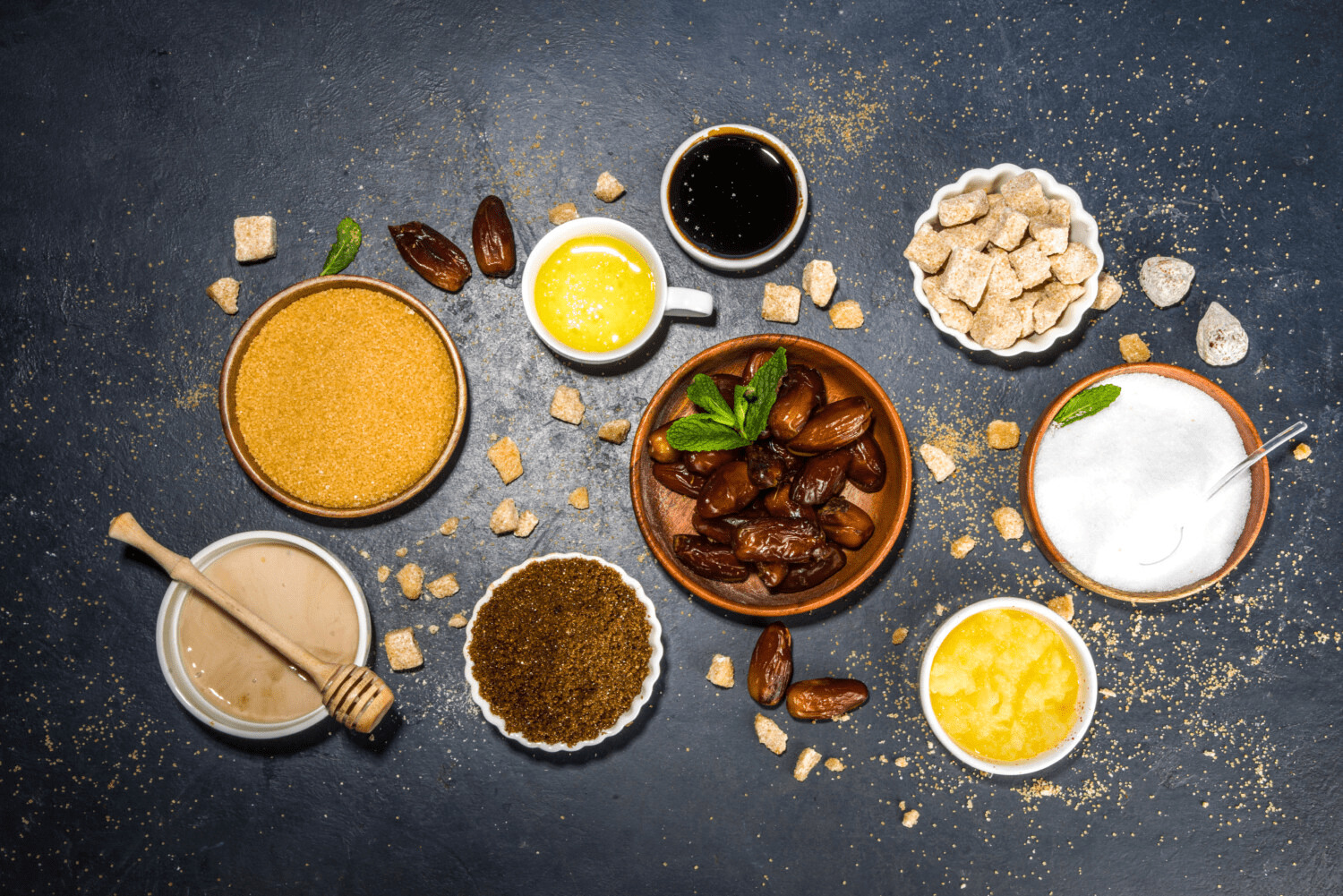For a variety of reasons, millions of individuals are actively trying to reduce their sugar intake, but this does not imply they are willing to sacrifice flavor. There are numerous sugar alternatives available. Finding a sugar alternatives for baking that does more than just taste sweet is crucial.
The alternative must also complement the recipe well, and it is crucial to know how to translate the amount of sugar a recipe specifies into the appropriate amount of the substitute. Which sugar alternatives work best for baking?
1. Allulose
Allulose is a recently developed sugar replacement. Jackfruit and raisins are two examples of fruits that naturally contain allulose. The term “allulose” refers to a simple sugar. It behaves just like conventional sugar in baking recipes and has the same appearance, texture, and flavor as white sugar. White sugar can be replaced by a 1:1 substitution of allulose.
Sponsered2
2. Splenda
A well-known sucralose-based sugar substitute with the brand name Splenda. A popular artificial sweetener is sucralose. Sucralose is made when the chemical bonds in ordinary sugar are altered. Splenda has a distinct aftertaste despite being sweeter than sugar. The Splenda aftertaste can occasionally be covered up by the other ingredients used in baking, but certain recipes still reveal the distinctive flavor.
Sugar can be directly replaced with splenda. Use the same quantity of Splenda that is specified in the recipe. Splenda functions just like sugar, making it perfect for baking.
3. Equal
An artificial sweetener with the brand name Equal is manufactured from a combination of aspartame and acesulfame potassium. Equal is a sugar alternative that can be used 1:1, however it is not always the greatest option for baking. Equal is exceedingly sweet, making it a great substitute for sugar in baked goods where flavor is sugar’s main function.
Sponsered2
But sugar also has other uses. Equal might not be an excellent substitute for sugar if the latter is needed to give baked goods structure or color. Equal makes baked goods cook more quickly than those produced with sugar and can make cakes tougher and cookies softer. Yet, it can be quite useful for bakers who have experience with Equal.
4. Stevia
There are many businesses that make sugar alternatives made from the plant known as stevia, which has sweet leaves. Some businesses manufacture sweetener made from dried and crushed stevia leaves. The particular chemical ingredient that gives the stevia leaf its sweetness is also used by other businesses to develop sugar substitutes.
Compared to sugar, stevia is significantly sweeter. Although more caution and investigation are required, stevia can be beneficial for baking. There are many stevia-based sugar alternatives, and each business has its unique formulation. Many businesses add components that alter how stevia sugars heat up and interact with other baking ingredients, such as sugar alcohols. Instead of only contributing a sweet flavor during baking, sugar affects the baked goods’ texture.
Sponsered2
Certain stevia sugars don’t work well as a direct substitute for sugar, though this will depend on the product. For a recipe to work, you might need to use a mixture of half sugar and half stevia.
5. Coconut Sugar
Contrary to what its name implies, neither does coconut sugar taste like coconut or come from a coconut. It is actually the ground stalk of coconut blossoms, which are flowers that grow on coconut trees. Coconut sugar resembles brown sugar. It is an extremely soft sugar that is nearly powdered in texture.
As coconut sugar is so granular, it can leave baked foods feeling dense and dry. It is frequently a good idea to increase the amount of melted butter or fruit—such as applesauce or mashed bananas—in a baking recipe to make up for the texture. To maintain the finished product appearing and tasting the way it should, these minor modifications provide more moisture.
Sponsered2
Many people contrast brown sugar and coconut sugar in terms of flavor. Some people even say it tastes like smokey caramel. Coconut sugar is a great option for baked items that are more savory and lean toward the caramel, butter, and brown sugar flavors because it has a stronger flavor than ordinary sugar. The same amount of coconut sugar as called for in the recipe can be used by bakers.
6. Agave Nectar
The agave plant produces agave nectar. Agave plants produce tons of sweet juice. After the plant has been juiced, the juice is heated up, much like maple syrup is, to make it into syrup. Sweet, liquid nectar is the result. Because agave nectar is so sweet, there is no fake aftertaste or lack of sweetness, making it a wonderful option for baking. Agave nectar has a flavor that some people liken to honey.
While agave nectar makes a dish sweeter, it is substantially different from sugar in many ways. Since agave nectar is a liquid, using it alone may cause the finished product to be overly soft or even runny. For every cup of agave nectar you use, add an additional quarter cup of flour to the baking mixture to account for the additional liquid it will add. Agave nectar can be used in baking in the same amounts as sugar because it has a similar sweetness level.
Sponsered2




